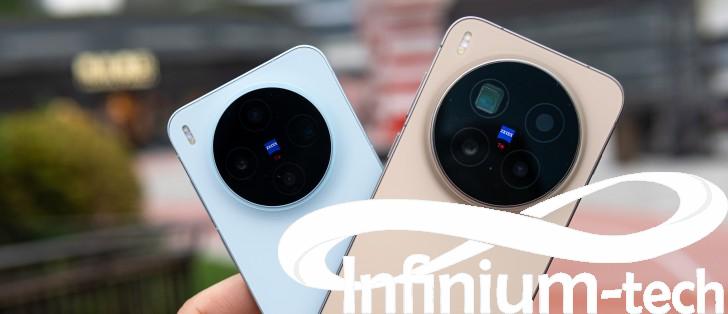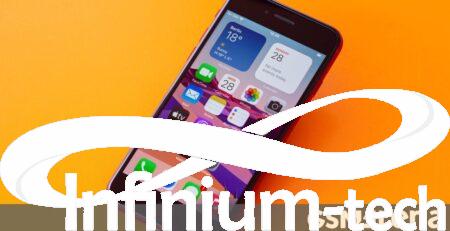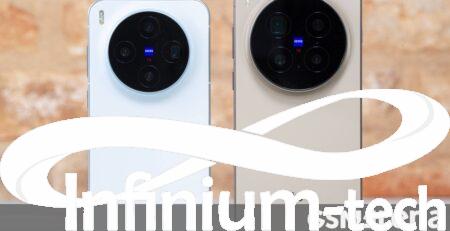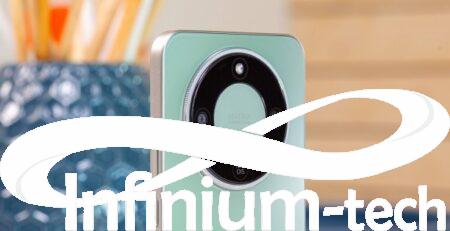vivo X300 & X300 Pro hands-on review | Infinium-tech
Introduction
Vivo’s X300 series has arrived, and it brings a compact flagship in the big flagship X300 Pro and X300. It reflects a new approach from Vivo, which turns 30 by giving us the X200 and X200 Pro as well as the X200 Pro Mini counterpart, just two phones at once.
New to both phones is the ‘all big core’ Dimensity 9500 – a 3nm powerhouse of a SoC that can propel the X300 phone to Antutu 11 scores of over 4 million.

While last year’s X200 had to struggle for its identity in the shadow of the similarly sized but better-equipped X200 Pro, this year’s It is on par with the Pro in terms of display and battery technology, design and build, and processing prowess, but lags behind in terms of all-around camera performance. When referring to it on stage during the launch in China, it was often called the X300 Pro Mini, which gives you an idea of what Vivo is aiming for here.
The smaller phone uses the same 1/1.4-inch 200MP ISOCELL HPB sensor for its main camera as the X300 Pro’s telephoto, which is a notable upgrade over the X200’s 1/1.56-inch 50MP. This bumps up the 32MP selfies to a new 50MP (again, same goes for the X300 Pro). The rest of the cameras are similar, if not identical, to last year’s

But the biggest story here is the more compact body. Fans of small flagship phones will love the new X300. It is only 151 mm long, 72 mm wide and slightly less than 8 mm thick. Its measurement is also only 190 grams. The body is flat from the front and back and has flat mats on the sides. You can configure the Vivo X300 in some interesting colors, like blue, purple, pink (which has an interesting hue), and red.
Vivo X300 specifications at a glance:
- Body: 150.6×71.9×8.0mm, 190g; Glass front, aluminum alloy frame, glass back; IP68/IP69 dust resistant and water resistant (high pressure water jets; submersible up to 1.5 meters for 30 minutes).
- Display: 6.31″ LTPO AMOLED, 1B color, 120Hz, 2160Hz PWM, HDR10+, HDR Vivid, 4500 nits (peak), 1216x2640px resolution, 19.54:9 aspect ratio, 460ppi; Ultra HDR image support.
- Chipset: MediaTek Dimensity 9500 (3 nm): Octa-core (1×4.21 GHz C1-Ultra & 3×3.5 GHz C1-Premium & 4×2.7 GHz C1-Pro); Arm G1-Ultra.
- Memory: 256GB 12GB RAM, 256GB 16GB RAM, 512GB 12GB RAM, 512GB 16GB RAM, 1TB 16GB RAM; UFS 4.1.
- OS/Software: Up to Android 16, 4 major Android upgrades, Funtouch 16 (International), OriginOS 6 (China).
- rear camera: wide (main): 200 MP, f/1.7, 23mm, 1/1.4″, 0.56μm, PDAF, OIS; telephoto: 50 MP, f/2.6, 70mm, 1/1.95″, PDAF, OIS, 3x optical zoom; ultra wide angle: 50 MP, f/2.0, 15mm, 119˚, 1/2.76″, 0.64µm, AF.
- Front Camera: 50 MP, f/2.0, (wide), 1/2.76”, 0.64 µm.
- video capture: rear camera: 4K@30/60/120fps, 1080p@30/60/120/240fps, Gyro-EIS, 4K@120fps HDR; front camera: 4K@30/60fps, 1080p@30/60fps.
- Battery: 6040mAh; 90W wired, 40W wireless, reverse wired.
- Connectivity: 5G; é SIM; Wi-Fi 7; BT5.4, aptX HD, LHDC5; NFC; Infrared port.
- various: Fingerprint reader (under the display, ultrasonic); Stereo speaker.
The Vivo X300 Pro is a direct upgrade of its predecessor. You get annual chipset upgrades and a more refined body. The phone is slightly thin at 8mm. The X300 Pro is just as flat on the front and back as the X300 but unlike the smaller phone, it has a slightly curved 3D glass edge where the glass meets the frame. The frame no longer has a glossy finish, but a matte finish.

The camera system has also been refined, although on the surface it appears to be the same. Vivo says that the 85mm f/2.67 Zeiss APO telephoto camera is all-new. On the surface, the 85mm f/2.67 is exactly the same as the one on the X200 Pro, but the zoom on the X300 Pro uses ISOCELL HPB, an optimized HP9 version co-developed between Vivo and Samsung. It is the result of a two-year collaboration between the two giants. The HPB moniker stands for ‘HP9 Blue’, but it wasn’t clear how it differs from the regular HP9 found on the Vivo X200 Pro.
Vivo X300 Pro specs at a glance:
- Body: 161.2×75.5×8.0 mm, 226 g; Glass front, aluminum alloy frame, glass back; IP68/IP69 dust resistant and water resistant (high pressure water jets; submersible up to 1.5 meters for 30 minutes).
- Display: 6.78″ LTPO AMOLED, 1B color, 120Hz, 2160Hz PWM, HDR10+, HDR Vivid, Dolby Vision, 4500 nits (peak), 1260x2800px resolution, 20:9 aspect ratio, 452ppi; Ultra HDR image support.
- Chipset: MediaTek Dimensity 9500 (3 nm): Octa-core (1×4.21 GHz C1-Ultra & 3×3.5 GHz C1-Premium & 4×2.7 GHz C1-Pro); Arm G1-Ultra.
- Memory: 256GB 12GB RAM, 512GB 16GB RAM, 1TB 16GB RAM; UFS 4.1.
- OS/Software: Up to Android 16, 4 major Android upgrades, Funtouch 16 (International), OriginOS 6 (China).
- rear camera: wide (main): 50 MP, f/1.6, 24mm, 1/1.28″, 1.22µm, PDAF, OIS; telephoto: 200 MP, f/2.7, 85mm, 1/1.4″, 0.56µm, multi-directional PDAF, OIS, 3.7x optical zoom, macro 2.7:1; ultra wide angle: 50 MP, f/2.0, 15mm, 119˚, 1/2.76″, 0.64µm, AF.
- Front Camera: 50 MP, f/2.0, (wide), 1/2.76”, 0.64 µm.
- video capture: rear camera: 8K@30fps, 4K@30/60/120fps, 1080p@30/60/120/240fps, Gyro-EIS, 4K@120fps 10-bit Log, Dolby Vision HDR; front camera: 4K@30/60fps, 1080p@30/60fps.
- Battery: 6510mAh; 90W wired, 40W wireless, reverse wireless, reverse wired.
- Connectivity: 5G; é SIM; Wi-Fi 7; BT5.4, aptX HD, LHDC5; NFC; Infrared port.
- various: Fingerprint reader (under the display, ultrasonic); stereo speakers; Satellite connectivity support (optional, depending on market/region).
Both phones use new silicon anode technology batteries – this is their fourth generation technology and second generation semi-solid-state batteries. The larger X300 Pro has a 6,510mAh cell, while the X300 has a 6,040mAh unit. Vivo says the software and hardware advancements together deliver a battery capacity on par with the 7,500mAh and 7,000mAh batteries of other phones. Their performance is impressive even in the cold and in one of the demos we saw, one of the phones sat in a block of ice and worked without any issues for hours.
Finally, Vivo’s OriginOS 6 sits at the top of the new series. It has a new translucent design, a new engine, and is tasked with getting the best out of the new Dimensity 9500. Vivo says they have rebuilt Android from the ground up for better battery efficiency and performance. Innovations such as ultra-core computing, dual rendering and memory fusion ensure that the all-big-core chip delivers the best possible sustained performance.














Leave a Reply